Making an Honest Woman of Herself: The Story of The World Famous *BOB*
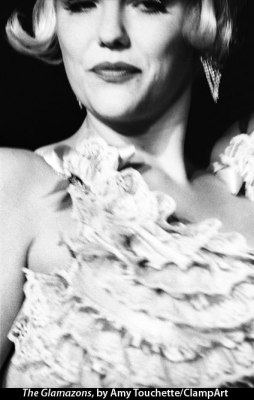 You can’t ignore The World Famous *BOB*. Standing at around six foot six in a bouffant wig and high heels, voluptuous and effervescent, she dominates any room she enters. You might assume she’s a man in drag, but you’d be wrong—though *BOB* has been known to pass as a queen when performing in drag clubs. In fact, she’s somewhat unique, a female burlesque performer who at one point identified as male, was embraced by gay men and drag queens, then realized she could “transition” to womanhood while retaining her outsize personality.
You can’t ignore The World Famous *BOB*. Standing at around six foot six in a bouffant wig and high heels, voluptuous and effervescent, she dominates any room she enters. You might assume she’s a man in drag, but you’d be wrong—though *BOB* has been known to pass as a queen when performing in drag clubs. In fact, she’s somewhat unique, a female burlesque performer who at one point identified as male, was embraced by gay men and drag queens, then realized she could “transition” to womanhood while retaining her outsize personality.
Hers is “the ultimate postmodern gender story,” says Amy Touchette, a photographer who spent four years documenting *BOB*’s life on and off stage. Born in California, *BOB* grew up in what she describes as a “toxic, violent atmosphere,” escaping first into a fantasy world, then into drug use. At fifteen, realizing she “had never been around or experienced a happy woman,” she started identifying as male and left home, living in the right-hand side of a car owned by a gay Goth hairdresser. Much later, after years of passing as a male drag queen, *BOB* realized she didn’t have to become a transsexual—she could just be her outrageous self.
This remarkable story is told in Touchette’s newly published book Shoot the Arrow: A Portrait of The World Famous *BOB*, and in a current show at ClampArt gallery in Chelsea. In the book, Touchette’s grainy black-and-white images are interspersed with *BOB*’s story in her own words. The result is a powerful collaboration that goes beyond many documentary projects, at once capturing the nuances of *BOB*’s life and giving her a voice and platform of her own.
This kind of collaboration is essential to Touchette. Trained as a painter, she transitioned to photography when she realized she wanted to immerse herself in other people’s lives. Above all, she says, she wanted “to learn how to make other people feel comfortable,” which involved feeling comfortable herself. Her work focuses on portraits, most shot spontaneously on the streets of New York City. Shoot the Arrow is her first book.
What led you to be interested in burlesque, and to attend the show at CBGB’s where you first saw *BOB*?
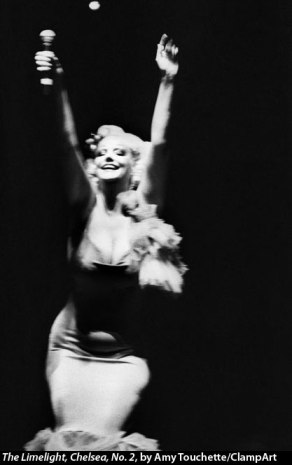 In 2002, my boyfriend and I had just finished dinner and were looking for something to do. He suggested going to a burlesque show—the form was experiencing a revival—so we went to CBGB’s. When we arrived, the only place to stand was by the stage wings, which gave me a unique perspective. I could see the performers being “on” when they faced the crowd, then watched their faces drop with exhaustion when they turned away. Watching them manage it all really intrigued me. Then *BOB* came on, and of course, you don’t miss her, she’s larger than life. She’s an obvious subject—extremely visual, perfect for the medium of photography—but I wanted to get deep into her life, to go way beyond burlesque. I was more interested in *BOB* herself than in burlesque.
In 2002, my boyfriend and I had just finished dinner and were looking for something to do. He suggested going to a burlesque show—the form was experiencing a revival—so we went to CBGB’s. When we arrived, the only place to stand was by the stage wings, which gave me a unique perspective. I could see the performers being “on” when they faced the crowd, then watched their faces drop with exhaustion when they turned away. Watching them manage it all really intrigued me. Then *BOB* came on, and of course, you don’t miss her, she’s larger than life. She’s an obvious subject—extremely visual, perfect for the medium of photography—but I wanted to get deep into her life, to go way beyond burlesque. I was more interested in *BOB* herself than in burlesque.
In the book, *BOB* says she was annoyed by all the photographers who wanted to photograph her transforming herself backstage. She says, “I felt… they should just enjoy the cake and not just ask for the recipe.” What made you different, how did you break through?
Luckily I didn’t know other photographers were besieging her at the time, or I would have been intimidated! I went back to CBGB’s a week after I first saw her, introduced myself, and asked if I could photograph her performance that night. A few weeks later we met at a cafe, and I brought some of the images along and explained I wanted to photograph her life offstage. I knew instinctively that she should be in control of where and when to meet. Initially we agreed she’d choose three hours a week and I’d photograph her doing whatever she did during those hours. But eventually I wanted to go deeper, so after several months we started meeting for a twenty-four hour period, when I’d go wherever she went, eat what she ate, sleep in her bed. That created pockets of time where we got much closer. And it was that experience I was really after; I came to photography because I wanted to learn how to make other people feel comfortable, starting with myself, and I knew immersing myself in the life of a total stranger who was very different from me would be the ultimate environment in which to do that.
At what point did it become a book project?
I always saw it as a book project, which is rare because I’ve made other bodies of work since, and I never have such a clear vision at the outset. But I wanted to make a deep chronicling of her life, and I knew her story couldn’t be told in five or ten or even thirty photographs. It took me a while to figure out how to do it. I experimented a lot, even photographing in color too, because she’s such a colorful person, and at some point I’d asked myself, Am I being stupid doing this in black and white? It took a while to see what worked best with the story that was unfolding. Once I had a selection I felt good about, I presented it to publishers.
Why did you decide on black and white, not color?
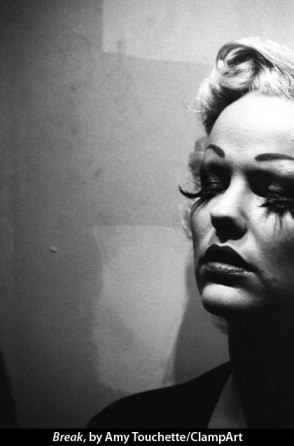 Well, first of all, that was my sensibility at the time. I was working on very large black-and-white oil-on-canvas portraits before I began this project, and was very much enamored with the comfort of the aesthetics of black-and-white—the nostalgia of times past, the little bit of sadness and soul that it evokes. So when I began photographing, given that photographs are ostensibly memories, it made sense to continue that aesthetic in my photographs. I’m sure it was this proclivity that led me from painting to photography to begin with. When I saw how *BOB* photographed in black-and-white, I loved how real the images felt. Something was reduced, removed, and we could look at her more honestly, I felt, without the distraction of the bells and whistles of color. Also, there are a lot of images at night, where she is alone or in a mysterious context, and I wanted to emphasize the beauty of those scenarios with deep blacks and a veil of film noir. *BOB*’s story is so contemporary, I thought counteracting that with the grainy, more traditional style of black-and-white would be interesting.
Well, first of all, that was my sensibility at the time. I was working on very large black-and-white oil-on-canvas portraits before I began this project, and was very much enamored with the comfort of the aesthetics of black-and-white—the nostalgia of times past, the little bit of sadness and soul that it evokes. So when I began photographing, given that photographs are ostensibly memories, it made sense to continue that aesthetic in my photographs. I’m sure it was this proclivity that led me from painting to photography to begin with. When I saw how *BOB* photographed in black-and-white, I loved how real the images felt. Something was reduced, removed, and we could look at her more honestly, I felt, without the distraction of the bells and whistles of color. Also, there are a lot of images at night, where she is alone or in a mysterious context, and I wanted to emphasize the beauty of those scenarios with deep blacks and a veil of film noir. *BOB*’s story is so contemporary, I thought counteracting that with the grainy, more traditional style of black-and-white would be interesting.
Some of the content reminds me of Susan Meiselas‘s first book, Carnival Strippers, which is also in black and white, though the women in it are in a rougher place. Was that a reference point for you?
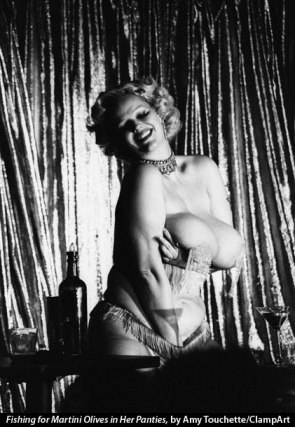 I love Carnival Strippers: I’m actually looking at my copy of it on the shelf as we speak! I’ve been heavily influenced by Meiselas, and continue to be: I love how intimate she got with those girls and the grain in her photographs is just beautiful. She is a real force. But that work was done in the 1970s, when women were in a very different place, and she was commenting on that. The strippers she photographed were almost prostitutes, and although burlesque contains sexual material, it’s not about that. It’s performance art. Also, as much as Susan Meiselas got some amazing behind the scenes photographs of the carnival strippers, she didn’t photograph their home life or personal lives much. That was something I was interested in. My series is more about *BOB* and less about women.
I love Carnival Strippers: I’m actually looking at my copy of it on the shelf as we speak! I’ve been heavily influenced by Meiselas, and continue to be: I love how intimate she got with those girls and the grain in her photographs is just beautiful. She is a real force. But that work was done in the 1970s, when women were in a very different place, and she was commenting on that. The strippers she photographed were almost prostitutes, and although burlesque contains sexual material, it’s not about that. It’s performance art. Also, as much as Susan Meiselas got some amazing behind the scenes photographs of the carnival strippers, she didn’t photograph their home life or personal lives much. That was something I was interested in. My series is more about *BOB* and less about women.
You also take the collaboration a bit further, including a moving essay by *BOB* that’s interspersed with the images in the book. Why was it important to have her speak in her own words, and what gaps does this fill?
Well, it gives her biography, for one. The images in the book are about a very specific period in her life, and from looking at them we don’t find out where she came from and how she got to where she is now. Her style is heavily influenced by drag queens, and because she gave herself a man’s name, people are often confused about whether she is a man or woman. It’s the ultimate postmodern gender story, and it takes some unraveling. Generally I’m not that interested in words directly accompanying my photos, so I was very happy Un-Gyve Press designed the book so that words and images are never on the same page or even page spread. The story is interwoven, and I think it has a very powerful effect.
What images are most special for you?
The most special images are of *BOB*’s best friend, Jeff, who passed away during the time period in which I was photographing *BOB*. He was a very special person—super open and loving, really funny, and a pillar of strength like no other in *BOB*’s life. In the book there are a couple of images of him from the trip the three of us took to Fire Island one summer, and then later an image of him after he turned to ashes. It’s surreal, how matter of fact photographs can be. *BOB* has endured a lot of tragedies in her life, and she’s learned how to surmount them with wisdom, but this loss was unbearable to witness for many reasons.
Are you still photographing her?
I don’t photograph her like I used to; the project’s over. But we’re good friends, and I photograph her the way I photograph all the people in my life now. We get together fairly often, and she’s been involved in the promotion of the book. Her presence adds so much; it’s her book as much as mine. I love it when she comes to events because then people can get to know her. After all, that’s what it’s all about.
——————————————————
Shoot The Arrow–A Portrait of The World Famous *BOB* by Amy Touchette, can be bought at the Un-Gyve Press online bookstore.
Amy Touchette’s show is up until Nov. 16th at ClampArt, 521-531 West 25th Street, New York.
7 comments on “Making an Honest Woman of Herself: The Story of The World Famous *BOB*”
Leave a Reply
Connecting to %s

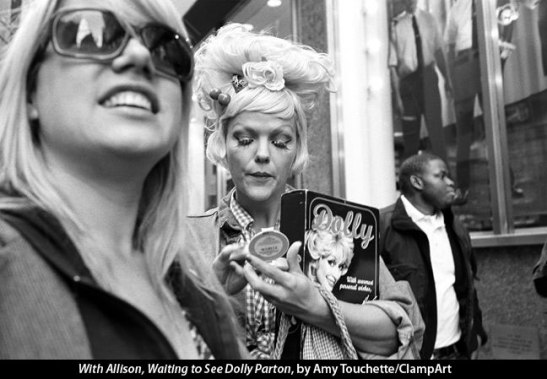
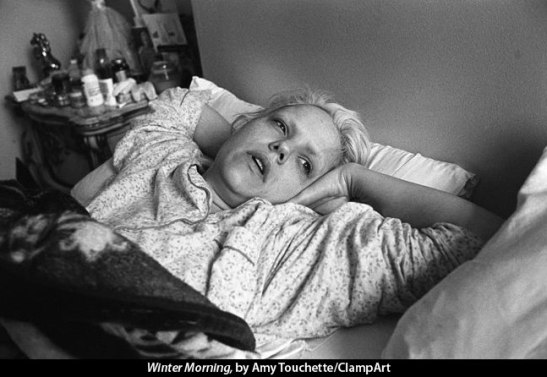
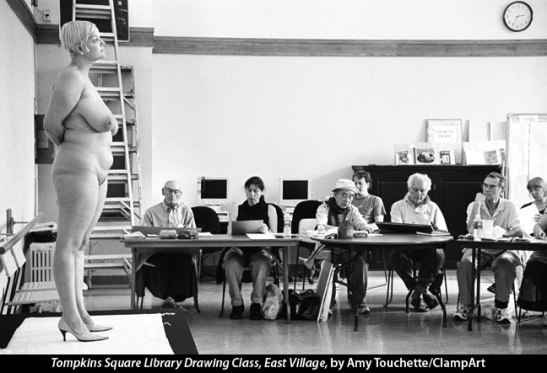
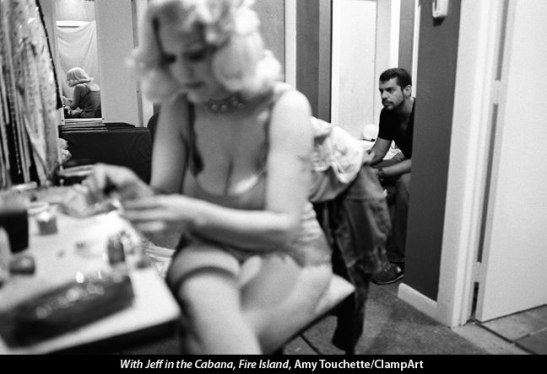

Wonderful interview, Sarah and Amy.
Thanks Robin!
Well written, sensitive and intelligent interview./review. Much what we have come to expect from literate lens. Will have a look at book. Sadly, based in UK I’ll miss the exhibition. Thanks x
I love the article …. so thoughtful on all sides. What an honor it’s been to work with Amy.
Thank you, Bob! For sure you had a wonderful collaboration. Readers are loving this article!
Thank you so much for your wonderful work in introducing *BOB* and Amy Touchette, all fabulous and an inspiring post!
You’re welcome, Patti — glad you enjoyed it!